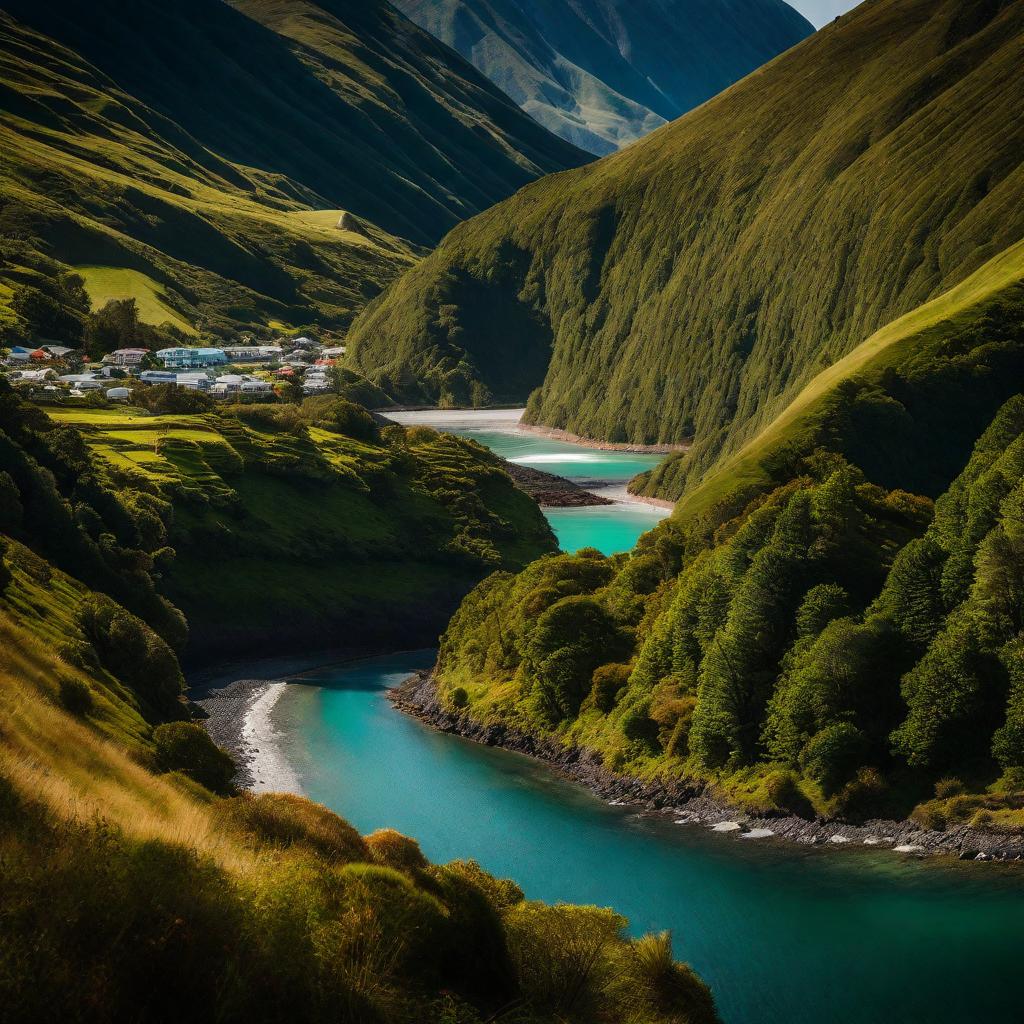Introduction : 5 Breath taking National Parks You Must Discover
5 Breath taking National Parks You Must Discover, In a world filled with bustling cities and constant noise, the allure of nature’s tranquility is undeniable. National parks offer a haven where one can escape the chaos of everyday life and immerse in the beauty of the great outdoors. In this blog post, we will explore the wonders of national parks, delve into the importance of connecting with nature, and provide a guide to finding the perfect national park for your next adventure.
A. Brief Overview of National Parks
National parks serve as protected of breathtaking landscapes, diverse ecosystems, and cultural significance. Established to conserve and showcase the natural and cultural heritage of a region, these parks offer a glimpse into the wonders of the natural world. From towering mountains to cascading waterfalls, from ancient forests to vibrant coral reefs, national parks preserve the beauty and wonder of our planet for generations to come.
B. Importance of Exploring Nature
Connecting with nature in national parks has been shown to have numerous physical, mental, and emotional benefits. Research indicates that spending time in nature can reduce stress, improve mood, increase creativity, and boost overall well-being. By immersing ourselves in the natural world, we can gain a sense of perspective, reconnect with the earth, and appreciate the beauty and diversity of our planet.
C. Guide to Finding the Perfect National Park
When choosing a national park for your next adventure, there are several factors to consider. Begin by identifying your interests, whether it be hiking, wildlife viewing, photography, or simply relaxing in nature. Research the different national parks in your desired region, taking note of their unique features, activities, and amenities. Consider the time of year and weather conditions, as well as any permits or reservations required. Finally, pack your bags, hit the road, and prepare for an unforgettable journey into the heart of nature.
So, whether you seek the thrill of adventure, the peace of solitude, or the chance to reconnect with loved ones, national parks offer a treasure trove of experiences waiting to be discovered. Start planning your next outdoor escape today and bask in the wonders of nature that await you.
1. Yellowstone National Park
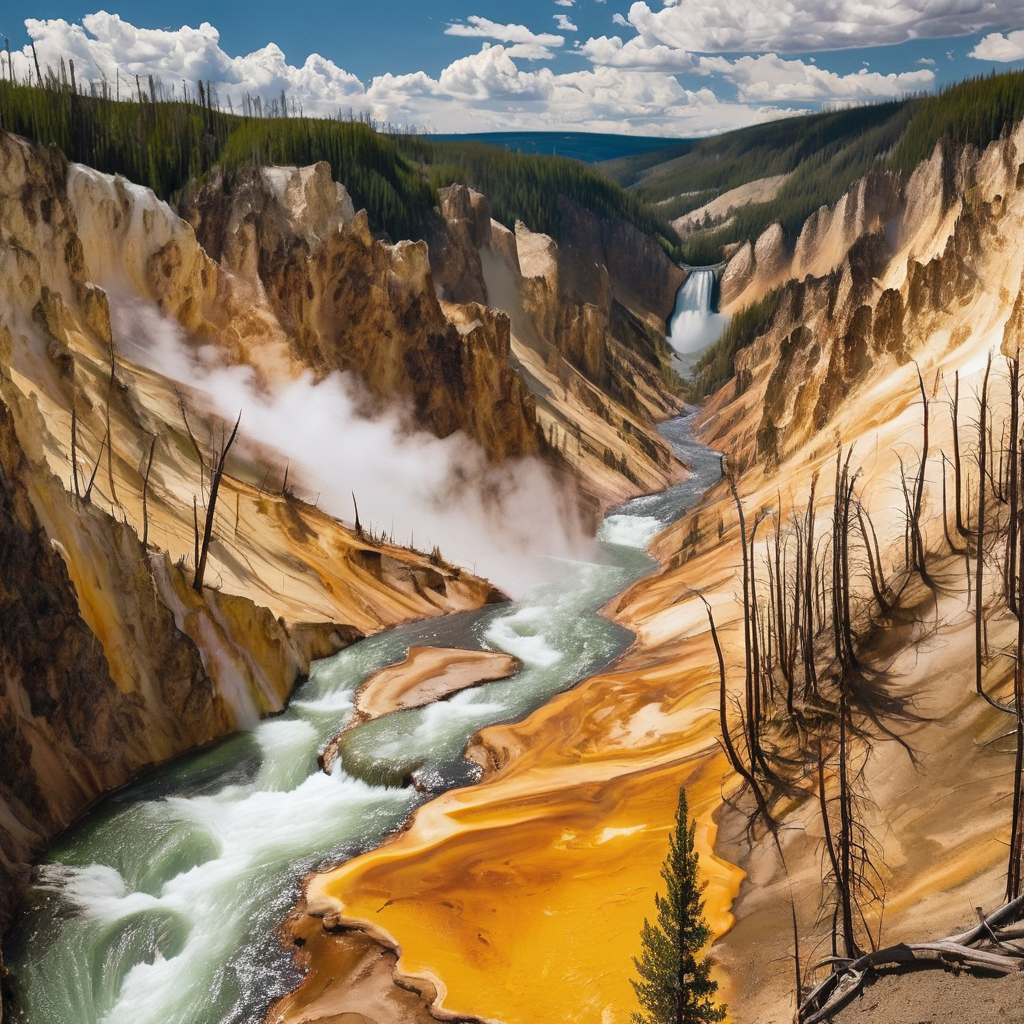
Geographical Information
Located primarily in Wyoming, Yellowstone covers nearly 3,500 square miles of pristine wilderness. The park’s climate varies significantly with the seasons, featuring warm summers with temperatures ranging from 70°F to 80°F and cold, snowy winters where temperatures can drop below zero. The best times to visit are late spring to early fall (May to September), when the weather is pleasant, and the park’s attractions are most accessible.
Geothermal Wonders
Yellowstone is a geothermal wonderland, home to more than 10,000 geothermal features, including geysers, hot springs, fumaroles, and mud pots. These phenomena are a result of the park’s location atop a volcanic hotspot.
Old Faithful Geyser
One of the most famous geothermal features in the world, Old Faithful, erupts approximately every 90 minutes, reaching heights of up to 185 feet. This geyser’s reliability and spectacular displays have made it a symbol of Yellowstone.
Grand Prismatic Spring
The largest hot spring in the United States, Grand Prismatic Spring is renowned for its vibrant colors. The deep blue center, surrounded by bands of red, orange, yellow, and green, creates a mesmerizing sight, thanks to the pigmented bacteria that thrive in the mineral-rich water.
Norris Geyser Basin
As the hottest and most dynamic of Yellowstone’s geothermal areas, Norris Geyser Basin features a variety of geysers and hot springs. The basin’s constantly changing landscape makes it a fascinating area to explore, with trails that offer close-up views of its thermal features.
Mud Volcano
Mud Volcano presents a different aspect of geothermal activity, where bubbling mud pots and acidic hot springs create a unique, almost otherworldly environment. Dragon’s Mouth Spring, with its roaring steam and turbulent waters, is a highlight of this area.
Iconic Wildlife
Yellowstone is a wildlife enthusiast’s dream, boasting a diverse array of species in their natural habitats.
Bison
The park is home to the largest concentration of bison in the United States. These majestic animals can be seen grazing in the valleys, often causing “bison jams” as they cross the roads.
Grizzly Bears
Grizzly bears are a symbol of the wild, and Yellowstone provides a critical habitat for these magnificent creatures. They are often spotted in the park’s remote areas, especially during the early morning and late evening.
Gray Wolves
Reintroduced to Yellowstone in the mid-1990s, gray wolves have played a crucial role in restoring the park’s ecological balance. Observing these predators in the wild is a rare and thrilling experience.
Elk
Elk are one of the most commonly seen animals in Yellowstone. They are often found in large herds in the park’s meadows and valleys, especially during the fall rutting season.
Adventure Activities for All Ages
Yellowstone offers a plethora of activities for visitors of all ages, making it an ideal destination for family vacations and solo adventures alike.
Hiking
With over 900 miles of hiking trails, Yellowstone caters to all levels of hikers. Popular trails include the Fairy Falls Trail, which offers views of the Grand Prismatic Spring, and the challenging Mount Washburn Trail, providing panoramic views of the park.
Camping
Camping is one of the best ways to experience Yellowstone’s wilderness. The park offers numerous campgrounds, such as Madison and Grant Village, catering to both tent campers and RV enthusiasts.
Fishing
Yellowstone is a fishing paradise, with its pristine rivers and lakes teeming with trout. Anglers flock to the park to fish in iconic spots like the Yellowstone River and Slough Creek.
Boating
Lake Yellowstone, the largest high-elevation lake in North America, offers excellent opportunities for boating. Renting a boat or taking a guided tour allows visitors to explore the lake’s scenic beauty and secluded coves.
Winter Activities
In the winter, Yellowstone transforms into a snowy wonderland. Activities like snowshoeing, cross-country skiing, and snowmobiling provide unique ways to experience the park’s serene winter landscape.
Cultural Insights
Yellowstone is not only a natural wonder but also a site rich in cultural history.
Native American History
For thousands of years, Native American tribes, including the Shoshone, Crow, and Blackfeet, have lived in and around Yellowstone, utilizing its resources and considering it a sacred place.
Early Explorers
In the early 1800s, explorers like John Colter and Jim Bridger ventured into Yellowstone, bringing back tales of its wonders that were initially met with skepticism.
Park Establishment
Yellowstone was established as the world’s first national park in 1872, a landmark decision that set the precedent for the global national park movement.
Must-Visit Attractions
Yellowstone Lake
This vast alpine lake is a centerpiece of the park, offering stunning views and opportunities for boating and fishing.
Hayden Valley
A prime location for wildlife viewing, Hayden Valley is home to bison, elk, grizzly bears, and wolves.
Mammoth Hot Springs
These terraced hot springs, with their striking formations, are a must-see. The Mammoth Hot Springs Historic District also offers a glimpse into the park’s human history.
Lamar Valley
Known as the “Serengeti of North America,” Lamar Valley is the best place to observe wildlife, including wolves, bison, and pronghorn.
Travel Tips
Accommodation Options
Yellowstone offers a range of accommodations, from historic lodges like the Old Faithful Inn to modern hotels and rustic cabins. Camping is also a popular option.
Transportation Within the Park
Getting around Yellowstone requires careful planning, as the park is vast and roads can be crowded during peak seasons. Renting a car is recommended, but guided tours and shuttles are also available.
Packing Essentials
Pack layers to prepare for variable weather, sturdy hiking boots, sunscreen, insect repellent, and a reusable water bottle. Don’t forget a camera to capture the park’s stunning scenery.
Safety and Health Precautions
Wildlife Safety
Always keep a safe distance from wildlife. Use binoculars or a zoom lens for close-up views, and never approach or feed animals.
Weather Precautions
Yellowstone’s weather can change rapidly. Be prepared for sudden temperature drops and storms, especially if you’re hiking or camping.
Health Tips
Stay hydrated, wear appropriate clothing, and be mindful of altitude sickness if you’re not accustomed to high elevations.
Budget Planning
Entry Fees
Yellowstone charges an entry fee, which can be paid per vehicle or per individual for those entering by foot or bicycle. Annual passes are also available.
2. Grand Canyon National Park
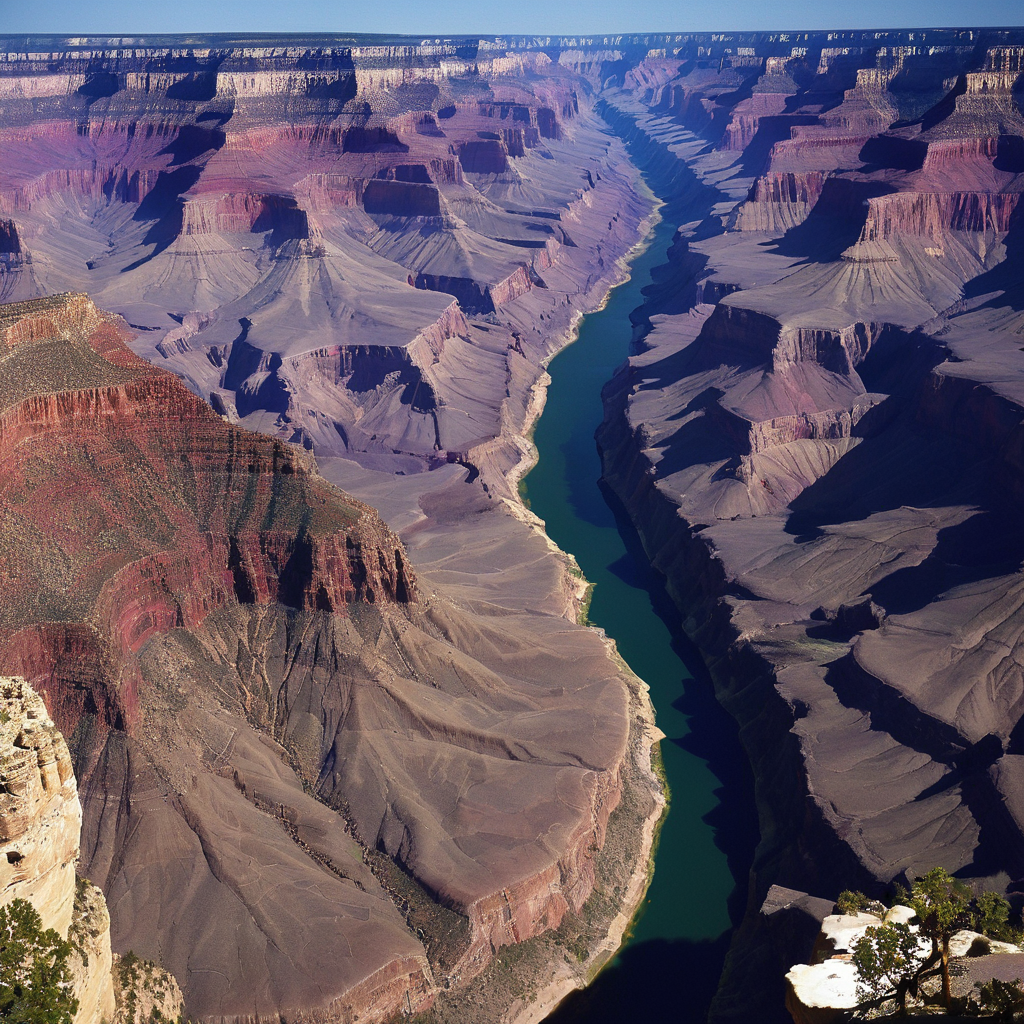
The Grand Canyon National Park is one of the most celebrated natural wonders of the world, offering a spectacular display of geological history. The Grand Canyon itself is an immense canyon carved by the Colorado River over millions of years, revealing layers of ancient rocks. The park was officially designated as a national park on February 26, 1919, but its significance had been recognized long before that by Native American tribes and early European explorers.
Native American tribes such as the Hopi, Navajo, and Havasupai have long held the Grand Canyon as a sacred site. These tribes have lived in and around the canyon for thousands of years, using its resources for sustenance and spiritual practices. Their ancient traditions and cultural heritage are still evident throughout the park today.
European exploration of the Grand Canyon began in the 16th century with Spanish explorers. However, it wasn’t until the 19th century that the area gained significant attention. John Wesley Powell’s expeditions in the late 1860s and early 1870s provided the first detailed maps and scientific descriptions of the canyon, highlighting its grandeur and promoting further exploration and tourism.
The establishment of Grand Canyon National Park was a culmination of conservation efforts led by individuals like President Theodore Roosevelt, who famously declared, “Let this great wonder of nature remain as it now is. Do nothing to mar its grandeur, sublimity, and loveliness. You cannot improve on it.”
Majestic Landscapes of Grand Canyon National Park
The landscapes of the Grand Canyon are unparalleled in their beauty and diversity. The canyon stretches approximately 277 miles long, up to 18 miles wide, and a mile deep. This colossal scale provides a variety of breathtaking vistas and geological formations.
Geological Wonders
The Grand Canyon is a geologist’s dream, showcasing nearly two billion years of Earth’s history. The visible rock layers tell a story of ancient environments ranging from oceans to deserts. The most notable layers include the Vishnu Schist, which is the oldest at nearly two billion years old, and the Kaibab Limestone, the youngest at about 270 million years old.
Colorado River
The Colorado River is the lifeblood of the Grand Canyon, having carved its way through rock over millennia to create the canyon we see today. The river provides not only stunning views but also opportunities for whitewater rafting, which allows visitors to experience the canyon’s majesty from a unique vantage point.
Flora and Fauna
The park’s diverse ecosystems range from desert scrub to lush forests, supporting a wide variety of plant and animal life. The South Rim, which is more accessible to tourists, features pinyon-juniper woodlands and ponderosa pine forests. In contrast, the North Rim, which sits at a higher elevation, is characterized by dense forests of spruce, fir, and aspen.
Wildlife in the Grand Canyon is abundant and diverse. Visitors might encounter mule deer, elk, bighorn sheep, and even the elusive mountain lion. Birdwatchers can delight in spotting California condors, one of the world’s rarest birds, which have been reintroduced to the area.
Hikes and Lookout Points
Grand Canyon National Park offers some of the most iconic and challenging hikes in the world. Whether you’re looking for a strenuous trek or a leisurely stroll, there’s a trail to suit every adventurer.
Bright Angel Trail
One of the most popular trails, Bright Angel Trail, starts at the South Rim and descends over 4,380 feet to the Colorado River. This trail offers spectacular views of the canyon’s inner walls and provides access to Indian Garden, a lush oasis approximately halfway down. For those looking for a challenge, this trail is a rewarding yet strenuous hike.
South Kaibab Trail
The South Kaibab Trail is known for its steep descents and panoramic views. Starting at Yaki Point, this trail takes hikers down to the Colorado River and Phantom Ranch. Along the way, hikers can enjoy breathtaking vistas such as Ooh Aah Point and Skeleton Point, which offer some of the most stunning overlooks in the park.
North Kaibab Trail
The North Kaibab Trail is the only maintained trail from the North Rim to the Colorado River. This trail is less traveled than those on the South Rim, offering a more secluded experience. Key points along this trail include Roaring Springs, Cottonwood Camp, and the scenic Ribbon Falls.
Rim Trail
For those seeking a less strenuous adventure, the Rim Trail provides a more relaxed experience. This mostly paved trail runs along the South Rim from Hermits Rest to the South Kaibab Trailhead. It offers numerous vantage points where visitors can take in the expansive views of the canyon without descending into it.
Lookout Points
Mather Point, near the South Rim entrance, is one of the most visited lookout points and provides a stunning introduction to the Grand Canyon’s vastness. Yavapai Point, also on the South Rim, offers excellent views of the Bright Angel Canyon and the Colorado River below.
On the North Rim, Point Imperial and Cape Royal are must-visit lookout points. Point Imperial is the highest point on the North Rim, offering views of the Painted Desert and the eastern end of the Grand Canyon. Cape Royal provides a panoramic view that includes the Colorado River, and is known for its breathtaking sunsets.
Safety Tips for Hikers
Hiking in the Grand Canyon requires careful planning and preparation. The extreme temperatures, especially during summer, can be dangerous. It’s crucial to carry plenty of water, wear appropriate clothing, and start hikes early in the morning to avoid the midday heat. Always inform someone of your plans and check weather conditions before setting out.
3. Yosemite National Park
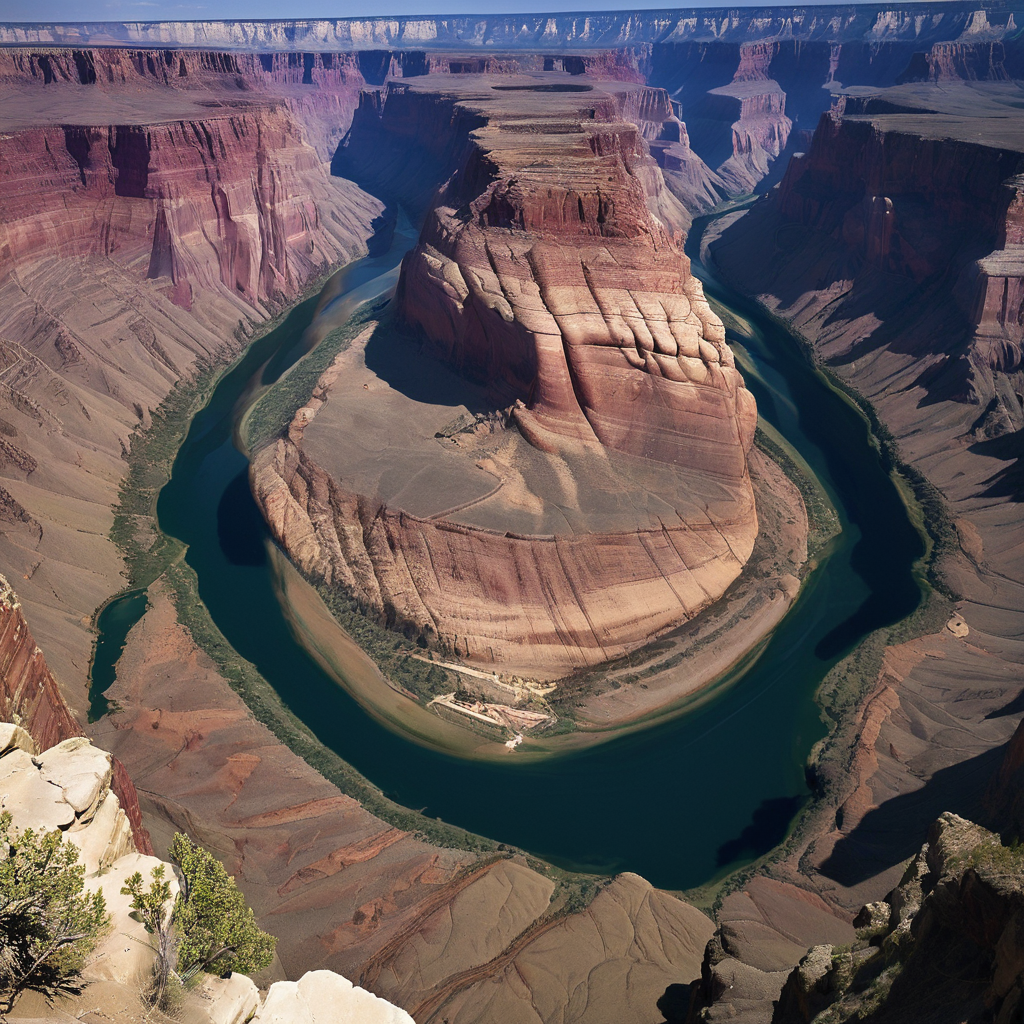
A Wonderland of Towering Waterfalls
Yosemite National Park is renowned for its awe-inspiring waterfalls, which are among the tallest and most powerful in the world. These natural wonders draw millions of visitors each year, eager to witness the breathtaking cascades and experience their majestic beauty.
Yosemite Falls
At the heart of Yosemite National Park lies Yosemite Falls, the tallest waterfall in North America. This iconic waterfall has a total drop of 2,425 feet, consisting of three sections: the Upper Falls, Middle Cascades, and Lower Falls. The best time to view Yosemite Falls is during late spring when the snowmelt peaks, resulting in a thunderous display of water roaring down the cliffs.
Bridalveil Fall
Another spectacular sight is Bridalveil Fall, which plunges 620 feet into the Yosemite Valley. This waterfall is often one of the first seen by visitors entering the park, providing a stunning welcome with its ethereal mist and graceful flow. According to local legend, inhaling the mist of Bridalveil Fall grants good luck in marriage.
Vernal and Nevada Falls
For those seeking a more immersive experience, the hike to Vernal and Nevada Falls along the Mist Trail is a must. Vernal Fall drops 317 feet and is known for the mist that drenches hikers as they ascend the steep steps alongside it. Further up, Nevada Fall plunges 594 feet, offering hikers a challenging yet rewarding journey with panoramic views of the surrounding granite cliffs and lush greenery.
Ribbon Fall
Ribbon Fall is the tallest single-drop waterfall in North America, cascading 1,612 feet down a sheer cliff. Though it is less accessible than other waterfalls in the park, it offers a unique and less crowded experience for adventurous visitors willing to explore the lesser-known corners of Yosemite.
Giant Sequoias: Nature’s Majestic Giants
Yosemite National Park is home to some of the world’s most magnificent trees, the giant sequoias. These ancient trees are among the largest and oldest living organisms on Earth, with some towering over 300 feet and boasting trunks over 25 feet in diameter.
Mariposa Grove
The Mariposa Grove is the largest grove of giant sequoias in Yosemite, containing over 500 mature trees. Among them is the famous Grizzly Giant, estimated to be around 1,800 years old. Walking through Mariposa Grove, visitors can also see the California Tunnel Tree, which was carved in 1895 to allow horse-drawn carriages to pass through.
Tuolumne Grove
Tuolumne Grove is another notable grove, featuring about two dozen mature giant sequoias. The grove is accessible via a moderate hike, providing an intimate encounter with these towering giants. The Dead Giant Tunnel Tree in Tuolumne Grove, though fallen, continues to be a point of interest with its massive trunk offering a glimpse into the past.
Merced Grove
For those seeking solitude, Merced Grove offers a peaceful retreat with fewer visitors. This smaller grove contains around 20 giant sequoias, creating a serene environment perfect for quiet reflection and appreciation of nature’s grandeur.
Rock Climbing and Camping Options
Yosemite National Park is a premier destination for rock climbing and camping, offering diverse opportunities for adventurers of all skill levels.
Rock Climbing
Yosemite is world-famous for its granite cliffs and challenging climbing routes. El Capitan and Half Dome are the most iconic climbing spots, attracting climbers from around the globe.
El Capitan
El Capitan is a 3,000-foot vertical rock formation that presents one of the most formidable climbing challenges. The Nose Route on El Capitan is legendary, combining technical difficulty with sheer height. For seasoned climbers, summiting El Capitan is a pinnacle achievement.
Half Dome
Half Dome offers both a challenging climb and a popular hike. The cable route to the summit is a strenuous ascent that rewards hikers with stunning panoramic views of Yosemite Valley. Climbers can also tackle the daunting face of Half Dome, which requires advanced skills and preparation.
Cathedral Peak
Cathedral Peak in the Tuolumne Meadows region provides a different climbing experience with its sharp spires and dramatic scenery. The Southeast Buttress is a classic climb that offers breathtaking views and a sense of wilderness adventure.
Camping Options
Yosemite offers a variety of camping options, from developed campgrounds to backcountry sites, catering to different preferences and levels of experience.
Valley Campgrounds
The Valley campgrounds—including Upper Pines, Lower Pines, and North Pines—are the most popular and provide easy access to Yosemite Valley’s attractions. These campgrounds offer amenities such as restrooms, bear-proof food lockers, and shuttle services.
Wawona Campground
Wawona Campground, located near the South Entrance, offers a quieter camping experience with proximity to the Mariposa Grove of Giant Sequoias. This campground is ideal for families and those seeking a more relaxed setting.
Tuolumne Meadows Campground
Tuolumne Meadows Campground is perfect for those looking to explore the High Sierra. This large campground provides access to scenic hiking trails, pristine lakes, and the stunning landscapes of Tuolumne Meadows.
Backcountry Camping
For a true wilderness experience, backcountry camping allows visitors to explore remote areas of the park. A permit is required for backcountry camping, and visitors must follow Leave No Trace principles to preserve the pristine environment.
Campfire Programs and Ranger-Led Activities
Yosemite offers a variety of campfire programs and ranger-led activities that provide educational and entertaining experiences. These programs cover topics such as the park’s natural history, wildlife, and conservation efforts, enhancing visitors’ appreciation of Yosemite’s natural wonders.
4. Zion National Park
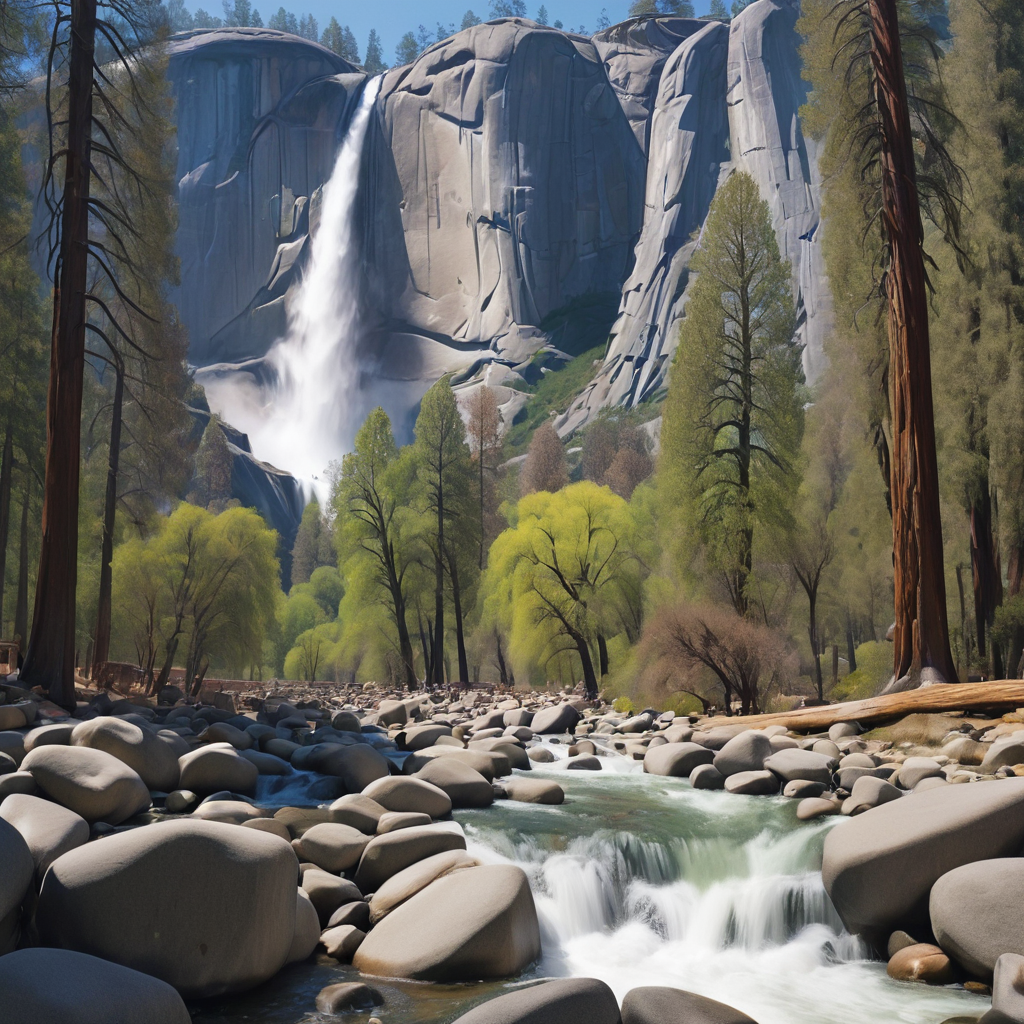
Red Rock Formations
The Majesty of Zion’s Red Rocks
Zion National Park’s red rock formations are among the most iconic and visually striking features of the park. These geological wonders, shaped by millions of years of erosion, offer a breathtaking backdrop for any visit.
Formation and Geology
The red rock formations of Zion are primarily composed of Navajo Sandstone, which gives the cliffs their distinctive reddish hue. Over millions of years, layers of sediment were deposited, compacted, and then uplifted by tectonic forces, creating the towering cliffs and deep canyons we see today. The rich iron content in the sandstone oxidizes, resulting in the vibrant red, pink, and orange colors.
The Great White Throne
One of Zion’s most recognizable landmarks is the Great White Throne. This massive monolith rises 2,350 feet above the canyon floor and is a symbol of Zion’s grandeur. The throne’s white cap, composed of lighter-colored sandstone, contrasts sharply with the surrounding red rocks, making it a photographer’s dream.
The Court of the Patriarchs
The Court of the Patriarchs is another must-see formation, featuring three towering sandstone peaks named Abraham, Isaac, and Jacob. These peaks are named after biblical figures and offer a majestic view that encapsulates the park’s spiritual and natural beauty.
Exploring the Rock Formations
Angels Landing
For those seeking adventure, the hike to Angels Landing provides an up-close experience with Zion’s red rock formations. This challenging trail involves a steep ascent and a narrow ridge with sheer drops on either side. The reward at the top is a panoramic view of Zion Canyon that is simply unforgettable.
Observation Point
Observation Point offers another incredible vantage point to admire Zion’s red rocks. The hike to Observation Point is longer and more strenuous than Angels Landing, but it provides a less crowded alternative with equally stunning views.
The Narrows Hike
An Adventurous Journey
The Narrows is one of the most famous hikes in Zion National Park, taking hikers through the Virgin River as it winds through a deep, narrow canyon.
The Virgin River
The hike begins at the Temple of Sinawava, where the Virgin River flows through towering canyon walls. Hikers wade through the river, navigating around rocks and boulders, with the canyon walls rising up to 1,000 feet above. The water levels can vary, so checking conditions before embarking on this hike is essential.
Wall Street Section
One of the most spectacular parts of The Narrows is the Wall Street section. Here, the canyon narrows significantly, creating a dramatic corridor with walls just 20 to 30 feet apart. This part of the hike is especially popular for its stunning beauty and the sense of adventure it offers.
Preparation and Safety
Gear and Permits
Hiking The Narrows requires proper preparation. Waterproof footwear, walking sticks, and dry bags are essential gear for navigating the river. During certain times of the year, a permit is required to hike the upper sections of The Narrows, so be sure to plan ahead.
Weather and Conditions
Weather conditions can greatly affect the safety of hiking The Narrows. Flash floods are a significant risk, so it’s crucial to check the weather forecast and river conditions before setting out. Rangers at the visitor center can provide up-to-date information on the hike’s safety.
Slot Canyons and Wildlife Spotting
Exploring Slot Canyons
Zion National Park is home to numerous slot canyons, offering unique and exhilarating exploration opportunities.
Antelope Canyon
While not within Zion National Park itself, Antelope Canyon is a nearby slot canyon that many visitors explore. Known for its wave-like structure and vibrant colors, Antelope Canyon is a photographer’s paradise and offers guided tours to navigate its narrow passageways.
Canyon Overlook Trail
The Canyon Overlook Trail provides access to some of Zion’s stunning slot canyons. This moderate hike leads to a breathtaking viewpoint overlooking Pine Creek Canyon and offers glimpses into the intricate beauty of slot canyons.
Wildlife Spotting
Zion’s diverse habitats support a wide range of wildlife, making it a fantastic destination for animal enthusiasts.
Bird Watching
Zion is a haven for bird watchers, with over 290 bird species recorded in the park. The endangered California Condor, with its impressive wingspan, can often be seen soaring above the canyon. Other notable bird species include peregrine falcons, red-tailed hawks, and the colorful western tanager.
Mammals
Mammals in Zion range from the common mule deer to the elusive mountain lion. Early morning or late evening hikes offer the best chances of spotting these creatures. Bighorn sheep, with their impressive curved horns, can often be seen navigating the park’s rocky terrain.
Reptiles and Amphibians
The park’s varied environments also support numerous reptiles and amphibians. The desert tortoise, a threatened species, can sometimes be spotted in the lower elevations. Zion is also home to several species of lizards and snakes, including the strikingly patterned banded Gila monster.
5. Glacier National Park
Glacier National Park is a pristine wilderness that offers unparalleled natural beauty and a myriad of outdoor activities. Known as the “Crown of the Continent,” this park is a haven for adventure seekers, nature lovers, and anyone looking to experience the awe-inspiring power of nature. Whether you’re captivated by the shimmering glacial lakes, scenic drives, or diverse hiking trails, Glacier National Park promises an unforgettable experience.
History and Significance
Glacier National Park was established in 1910, making it one of America’s oldest national parks. The park’s history is rich with stories of Native American tribes, European explorers, and conservationists who recognized the area’s unique beauty and ecological importance. The park’s designation as a UNESCO World Heritage Site underscores its global significance in preserving biodiversity and natural landscapes.
Geographical Information
Located in the northwest corner of Montana, Glacier National Park spans over a million acres and includes parts of two mountain ranges, over 130 named lakes, and more than 1,000 different species of plants. The climate varies significantly depending on the elevation and time of year, but the best times to visit are late June through mid-September when most of the park’s amenities are accessible.
Glacial Lakes
Formation and Features of Glacial Lakes
Glacial lakes are formed by the melting of glaciers, which carve out basins that fill with water. These lakes are known for their stunning clarity and unique blue-green color, a result of fine rock particles suspended in the water.
Lake McDonald
Lake McDonald is the largest lake in Glacier National Park, stretching over ten miles in length. The lake’s clear, cold waters are perfect for boating, fishing, and kayaking. The surrounding area offers numerous hiking trails and picnic spots, making it a popular destination for families.
St. Mary Lake
Located on the east side of the park, St. Mary Lake is the second largest lake and is known for its picturesque views of the surrounding mountains. The lake is a great spot for boat tours, which offer a unique perspective of the park’s stunning scenery.
Two Medicine Lake
Two Medicine Lake is a bit off the beaten path but is well worth the visit. This serene lake offers excellent opportunities for kayaking, canoeing, and fishing. The area is rich in cultural history, with numerous stories and legends from the Blackfeet Nation.
Iceberg Lake
Iceberg Lake is famous for its floating icebergs, which can be seen well into the summer. The hike to Iceberg Lake is moderately challenging, but the reward is a breathtaking view of the glacial lake surrounded by towering cliffs.
Scenic Drives
Importance of Scenic Drives in Glacier National Park
Scenic drives in Glacier National Park offer some of the most breathtaking views in North America. These routes provide easy access to the park’s most iconic landscapes and are a must-do for any visitor.
Going-to-the-Sun Road
The Going-to-the-Sun Road is perhaps the most famous scenic drive in the park. This 50-mile road crosses the Continental Divide at Logan Pass and offers stunning views of glaciers, mountains, and valleys. Key viewpoints along the road include the Weeping Wall, Jackson Glacier Overlook, and Lake McDonald Lodge.
Many Glacier Road
The Many Glacier Road provides access to the park’s northeastern region, known for its rugged terrain and abundant wildlife. Highlights include views of Swiftcurrent Lake, the Many Glacier Hotel, and the Grinnell Glacier.
Chief Mountain International Highway
Connecting Glacier National Park with Canada’s Waterton Lakes National Park, the Chief Mountain International Highway offers a scenic drive with views of rolling prairies, rugged mountains, and Chief Mountain, a sacred site for local Native American tribes.
Hiking Trails for All Levels
Overview of Hiking Opportunities
Glacier National Park is a hiker’s paradise, offering trails that range from easy strolls to challenging backcountry treks. Whether you’re a seasoned hiker or a beginner, there’s a trail for you.
Easy Trails
Trail of the Cedars
The Trail of the Cedars is a wheelchair-accessible loop that takes you through a lush forest of ancient cedar trees. The trail also provides access to the beautiful Avalanche Lake.
Hidden Lake Overlook
The Hidden Lake Overlook trail offers a relatively easy hike with spectacular views of Hidden Lake and the surrounding mountains. This trail is particularly popular for its scenic beauty and abundant wildlife sightings.
Moderate Trails
Grinnell Glacier Trail
The Grinnell Glacier Trail is one of the park’s most popular hikes, offering stunning views of Grinnell Lake, waterfalls, and glaciers. The trail is moderately strenuous, with a round trip distance of about 11 miles.
Avalanche Lake Trail
The Avalanche Lake Trail is a moderate hike that takes you through dense forest and along Avalanche Creek to the stunning Avalanche Lake, surrounded by towering cliffs and waterfalls.
Challenging Trails
Highline Trail
The Highline Trail is a challenging
trail that runs along the Continental Divide, offering breathtaking views of Glacier National Park’s rugged terrain. The trail is known for its narrow path and sheer drop-offs, making it an adventure for experienced hikers.
Iceberg Lake Trail
The Iceberg Lake Trail is a strenuous 9.7-mile round trip hike that rewards hikers with a stunning glacial lake often dotted with floating icebergs. The trail offers picturesque views and the chance to see a variety of wildlife.
Wildlife and Flora
Common Wildlife Sightings
Glacier National Park is home to a diverse array of wildlife. Visitors often spot majestic animals such as grizzly bears, black bears, mountain goats, and bighorn sheep. Birdwatchers can delight in sightings of bald eagles, ospreys, and a variety of songbirds.
Notable Plant Species
The park’s flora is equally diverse, with over 1,000 species of plants. Alpine meadows bloom with wildflowers like beargrass, glacier lilies, and Indian paintbrush. Dense forests are dominated by western red cedar, western hemlock, and Douglas fir.
Camping and Accommodation
Camping Options within the Park
Glacier National Park offers several campgrounds, including Apgar, Fish Creek, and St. Mary campgrounds. These campgrounds provide a range of amenities from basic tent sites to more developed sites with potable water and restrooms.
Lodging Options
For those seeking more comfort, the park has historic lodges such as the Many Glacier Hotel and the Lake McDonald Lodge. These lodges offer rustic charm with modern conveniences and are strategically located to provide easy access to the park’s main attractions.
Activities Beyond Hiking
Boat Tours and Fishing
The park’s glacial lakes offer excellent opportunities for boat tours and fishing. Guided boat tours are available on Lake McDonald, St. Mary Lake, and Two Medicine Lake, providing unique perspectives of the park’s landscapes. Fishing is also popular, with several lakes and streams teeming with trout.
Photography and Stargazing
With its stunning vistas and diverse wildlife, Glacier National Park is a photographer’s paradise. The park is also one of the best places in the U.S. for stargazing, thanks to its remote location and dark skies. The annual Waterton-Glacier International Dark Sky Week celebrates the night sky with events and programs for visitors.
Safety Tips
Weather Considerations
Weather in Glacier National Park can change rapidly, so it’s essential to be prepared. Always check the weather forecast before heading out and bring layers, as temperatures can vary significantly throughout the day.
Wildlife Safety
Encountering wildlife is a highlight of visiting Glacier, but it’s crucial to respect these animals and maintain a safe distance. Never approach or feed wildlife, and always carry bear spray when hiking in bear country.
Conservation Efforts
Importance of Conservation
Preserving Glacier National Park’s natural beauty and biodiversity is a top priority. The park’s glaciers are rapidly melting due to climate change, highlighting the urgent need for conservation efforts.
Ongoing Initiatives
Glacier National Park is involved in several conservation initiatives, including habitat restoration, wildlife monitoring, and efforts to reduce the park’s carbon footprint. Visitors can support these efforts by following Leave No Trace principles and participating in volunteer programs.
Visitor Information
Entrance Fees and Passes
Entrance fees for Glacier National Park vary depending on the season and type of vehicle. An annual pass is available for frequent visitors and provides unlimited access to the park.
Visitor Centers and Resources
The park has several visitor centers, including the Apgar Visitor Center and the St. Mary Visitor Center. These centers offer educational exhibits, park information, and ranger-led programs to enhance your visit.
Personal Stories and Testimonials
Visitors to Glacier National Park often share stories of their adventures and the park’s profound impact on their lives. From the awe-inspiring views to the serene moments by a glacial lake, these personal accounts highlight the magic of Glacier.
Expert Insights
Tips from Park Rangers and Local Experts
Park rangers and local experts offer invaluable tips for making the most of your visit. Their advice includes the best times to visit popular trails, safety tips for encountering wildlife, and recommendations for lesser-known gems in the park.
ALSO READ : 5 Best Places for Solo Traveling
Conclusion
Glacier National Park is a breathtaking destination that offers something for everyone. From its majestic glacial lakes and scenic drives to its diverse hiking trails and abundant wildlife, Glacier promises an unforgettable experience. Plan your visit to this natural wonder and immerse yourself in the beauty and serenity of the Crown of the Continent.
FAQs
What is the best time to visit Glacier National Park?
- The best time to visit Glacier National Park is from late June to mid-September when most of the park’s amenities and roads are open, and the weather is generally favorable.
Are there guided tours available in Glacier National Park?
- Yes, the park offers a variety of guided tours, including boat tours on glacial lakes, ranger-led hikes, and bus tours along scenic drives.
What should I pack for a visit to Glacier National Park?
- Pack layers for varying weather, sturdy hiking boots, a hat, sunscreen, insect repellent, and bear spray. Don’t forget your camera and binoculars for wildlife viewing!
Can I camp anywhere in Glacier National Park?
- Camping is allowed only in designated campgrounds and backcountry sites. A permit is required for backcountry camping, and reservations are recommended for the park’s campgrounds.
Is Glacier National Park family-friendly?
- Absolutely! The park offers a range of activities suitable for all ages, including easy hikes, scenic drives, boat tours, and educational programs at visitor centers.

